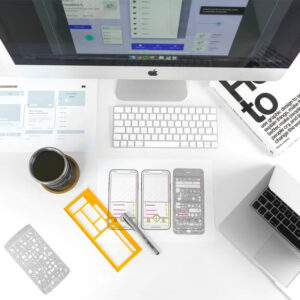The world of web design experiences all sorts of trends and fads, but some end up sticking around for much longer. One of the latest popular design trends, one which has a good shot at longevity, is cards.
If you think you have never heard of cards in web design, take a closer look at the apps on your phone or laptop computer. This design framework is used on platforms such as Google Now, photo sharing website Pinterest, Windows 8, Twitter and even Facebook. It works like this – the design is made up of small rectangles containing a few different images, text and links, all related to one central concept or topic. For example, on Facebook, one card contains a post by someone, plus images and links they’ve uploaded, and finally comments from other users and the poster’s reply to those comments. It’s a container style of design, where all of the different elements of one ‘thought’ are contained in one neat little box.
Why are cards so popular?
Designers and digital marketing professionals like this style of design because it’s a classic, aesthetic pleasing look that fits well with all different kinds of websites, be it magazine, grid or ‘pin’ style sites.
Cards are also an excellent way of organising large amounts of information, images and other content, without it cluttering up the page. Content can be grouped in each card, keeping the design simple, user-friendly and aesthetically pleasing. Card style design is also shaping up to be an enduring classic – designers and marketers like it because it always looks fresh, new and modern, because it is so simple and isn’t attempting to do anything too complicated.
On a final point, cards are so popular on today’s websites as the style also works well with both responsive and flat web design, other massive trends in the web design world right now.
From a user point of view, cards are incredibly easy to use. The grouping together of content makes it easy to find what you’re looking for, and on many platforms such as Windows – you can move cards around to customise your display. It’s easy, simple and organised, which is what people want in an online world of limitless content and information.
Using cards on your website
Implementing cards in your own website isn’t as simple as other design styles, as you need to get the user-friendliness just right. If your cards don’t load properly or work as they should, there’s no point at all in using them. You can test the logic of your cards offline (by actually using content written on cards) and it’s a good idea to extensively test your new design online too. Take a look at sites and platforms that already use cards, to get ideas and inspiration, and it can also be a good idea to get a designer with experience on card-based websites on your team. Good luck!
Do you have any experience in using cards on your own website? Do you think the style will stick around, or is it just another fad? Please feel free to share your thoughts.







